Are you looking for a way to enhance your child’s creativity while promoting a sense of calmness? Introducing mindfulness coloring pages for kids!
These captivating illustrations not only stimulate artistic expression but also cultivate mindfulness through the act of coloring. By engaging in this meditative activity, children can unleash their imagination while enjoying a serene and peaceful state of mind.
Table of contents
Introduction
In today’s fast-paced world, children often find themselves overwhelmed with screens and distractions, leaving little room for self-expression and inner peace. But fear not, for mindfulness coloring pages offer a delightful solution. By engaging in this simple yet powerful activity, children can tap into their creative potential while nurturing a sense of calm within.
Coloring has long been recognized as a wonderful tool for fostering children’s creativity. As they pick up their favorite crayons or markers, their imagination takes flight, and a blank page becomes a canvas for self-expression.
Whether it’s a whimsical unicorn, a lush garden, or an enchanting undersea world, these coloring pages ignite their artistic flair, allowing them to create and explore without limitations.
But the benefits of mindfulness coloring go far beyond artistic expression. Research has shown that coloring can have a profound impact on children’s emotional well-being. As they focus on the intricate details of each design, their minds become absorbed in the present moment, cultivating mindfulness.
This gentle act of concentration promotes relaxation and reduces stress, providing a much-needed respite from the demands of everyday life. So, join us as we embark on this captivating journey. Let’s unlock the door to your child’s creativity and guide them towards a state of calmness through the wonderful world of mindfulness coloring pages.
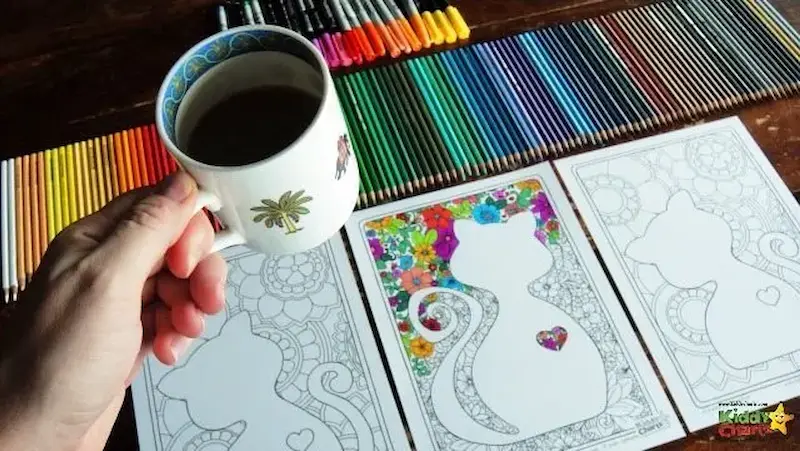
Understanding Mindfulness Coloring
Mindfulness coloring is a unique approach to the traditional coloring activity that incorporates principles of mindfulness, a state of focused awareness on the present moment. Unlike traditional coloring, where the primary focus is on the outcome or the finished product, mindfulness coloring emphasizes the process itself and the experience of coloring.
When practicing mindfulness coloring, children are encouraged to be fully present and engaged in the activity. They are invited to notice the sensations of holding the coloring utensil, the sound of the paper as they color, and the movements of their hand as they apply color to the page. By directing their attention to these details, children develop a heightened awareness of the present moment.
The principles of mindfulness, such as non-judgment and acceptance, also apply to coloring activities. Children are encouraged to let go of any self-critical thoughts or expectations and instead focus on the joy of coloring itself. There is no right or wrong way to color mindfully; it is about embracing the process and allowing creativity to flow without judgment.
One of the key aspects of mindfulness coloring is the deliberate choice of designs. Mindfulness coloring pages often feature intricate patterns or detailed illustrations that require focused attention. This complexity encourages children to slow down, concentrate, and be fully absorbed in the coloring experience. It becomes a meditative practice that promotes relaxation, reduces stress, and enhances overall well-being.
By practicing mindfulness while coloring, children learn to cultivate a sense of calmness and develop essential life skills. They become more attuned to their emotions, as coloring provides a safe outlet for self-expression. Additionally, the act of coloring mindfully fosters concentration, patience, and the ability to stay present, which can extend beyond the coloring pages and into various aspects of their lives.
Encouraging with inspirational quotes for kids empowers them to believe in their limitless potential and approach challenges with a positive mindset.
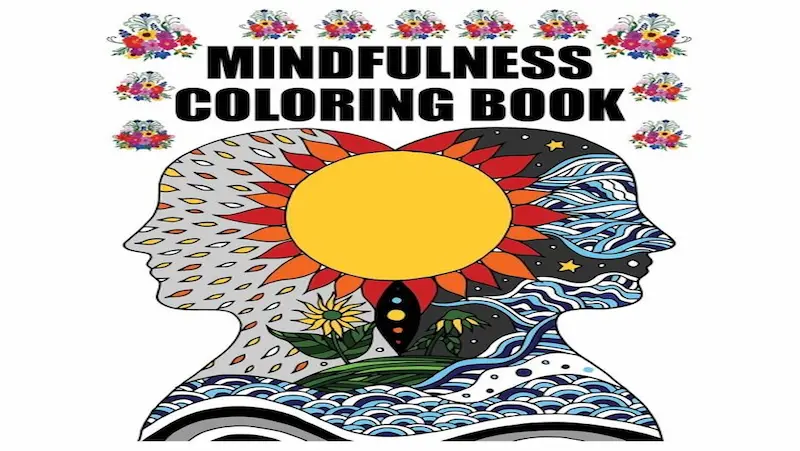
Benefits of Mindfulness Coloring for Kids
Mindfulness coloring offers a multitude of benefits for children, nurturing their well-being and development in various ways:
1. Relaxation and Stress Reduction: Engaging in mindfulness coloring promotes relaxation by calming the mind and soothing the nervous system. It provides a meditative and therapeutic experience that allows children to unwind, reduce anxiety, and find inner peace. Empowering Young Minds with Effective Stress Management for Kids Nurturing Emotional Resilience and Equipping Them with Essential Life Skills to Thrive in Challenging Situations.
2. Improved Focus and Concentration: Coloring mindfully requires sustained attention to intricate details and patterns. This focused engagement enhances children’s ability to concentrate, improving their attention span and strengthening their capacity for sustained focus in other areas of life.
3. Fine Motor Skills and Hand-Eye Coordination: Coloring within the lines and manipulating coloring tools develop fine motor skills and hand-eye coordination in children. The precise movements required to color mindfully enhance their dexterity and control over small muscles, preparing them for tasks such as writing and drawing.
4. Self-Expression and Creativity: Mindfulness coloring provides a platform for children to express themselves creatively without judgment or constraints. As they select colors, blend shades, and personalize the designs, they develop their artistic skills and cultivate their unique style of self-expression.
5. Emotional Regulation: Coloring mindfully encourages emotional regulation and self-awareness. It allows children to channel their emotions onto the coloring page, expressing their feelings through colors and shapes. This process helps them understand and manage their emotions in a healthy and constructive way.
6. Mindfulness and Mind-Body Connection: Mindfulness coloring teaches children to be present and fully engaged in the moment. It fosters a mind-body connection as they observe the sensations of coloring, promoting self-awareness and a deeper connection with their own thoughts, emotions, and physical experiences. Engage your child’s senses and awareness with these delightful mindfulness games for kids.
7. Therapeutic Outlet: Mindfulness coloring provides a safe and soothing outlet for children to relax, unwind, and process their thoughts and feelings. It can be particularly beneficial for children dealing with stress, anxiety, or challenging emotions, as it offers a gentle and non-threatening way to release tension and find emotional balance.
By embracing mindfulness coloring, children can experience a wide range of benefits that positively impact their overall well-being. From relaxation and improved focus to enhanced creativity and emotional regulation, this mindful activity empowers children to cultivate important life skills while finding joy and tranquility in the colorful world of their imagination.

Choosing the Right Coloring Tools
Selecting the right coloring tools is crucial for creating an enjoyable and satisfying coloring experience for children. Here are some considerations to guide you in choosing appropriate materials:
1. Quality Matters: Opt for high-quality coloring tools whenever possible. They tend to provide better color payoff, smoother application, and durability. This enhances the overall coloring experience and allows children to fully explore their creativity without frustration.
2. Crayons: Crayons are a classic choice for coloring and are suitable for children of all ages. They are easy to grip, have a wide range of vibrant colors, and are generally non-toxic. Crayons work well for larger coloring areas and can produce bold and opaque colors. Look for crayons that are break-resistant and have a smooth texture for effortless coloring.
3. Colored Pencils: Colored pencils are versatile and offer more precision and control compared to crayons. They are ideal for detailed coloring and blending. Colored pencils come in a wide range of colors, including various shades and tones. They are suitable for older children who have developed finer motor skills and the patience to work with intricate designs.
4. Markers: Markers provide bold and vibrant colors, making them appealing for children who enjoy creating vibrant and eye-catching artwork. They work well for larger coloring areas and can produce smooth, even coverage. However, markers can bleed through the paper, so it’s important to choose coloring pages with thicker paper or consider using a protective sheet underneath to prevent any unwanted marks on the surface below.
5. Watercolor Pencils or Brush Pens: For children who enjoy experimenting with blending colors and adding a watercolor effect, watercolor pencils or brush pens are a great option. These tools allow for the application of color as a pencil or marker and can be activated with water for a beautiful watercolor effect. They offer a unique and expressive coloring experience.
When selecting coloring tools, consider the age and skill level of the child. Younger children may find crayons easier to handle and control, while older children may appreciate the precision and versatility of colored pencils or markers.
Encourage children to explore different coloring tools and experiment with various techniques to discover their preferences. Ultimately, the goal is to provide them with materials that inspire their creativity and allow them to fully enjoy the mindfulness coloring process.
Check out If your child is intrigued by the world of robots,0 you won’t want to miss out on these captivating mindfulness games
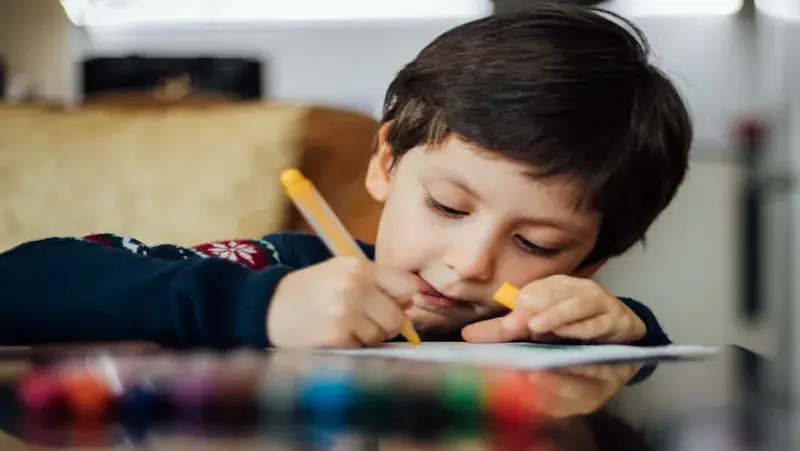
Selecting Mindfulness Coloring Pages
When selecting mindfulness coloring pages for kids, consider the following tips to ensure a suitable and engaging experience:
1. Calming Themes: Choose coloring pages with calming themes that resonate with children. Nature scenes, such as forests, gardens, or landscapes, can instill a sense of tranquility. Animals, particularly gentle creatures like butterflies or dolphins, can evoke a soothing and peaceful atmosphere. Mandalas, with their intricate patterns, can provide a meditative and relaxing coloring experience. Affirmation-based coloring pages featuring positive messages can also promote a sense of well-being and self-confidence.
2. Age-Appropriate Designs: Consider the age and skill level of the child when selecting coloring pages. Younger children may benefit from simpler designs with larger spaces to color, while older children may enjoy more complex patterns and details. Ensure the level of intricacy aligns with their abilities to avoid frustration or discouragement.
3. Printable Coloring Pages: The internet offers a wealth of free or printable coloring pages that cater to different themes and age groups. Websites such as Crayola, Coloring.ws, or JustColor.net provide a wide selection of coloring pages suitable for mindfulness coloring. These resources allow you to easily print out coloring pages at home, providing a convenient and accessible way to explore different designs.
Free coloring sheets for kids offer a creative outlet that sparks imagination and artistic expression. Children can use them to experiment with colors, enhance fine motor skills, and engage in calming activities that promote focus and mindfulness
4. Mindfulness Coloring Books: Consider purchasing mindfulness coloring books specifically designed for children. These books often feature a variety of calming themes, intricate patterns, and age-appropriate designs. They offer a curated collection of coloring pages that promote mindfulness and creative expression. Many bookstores, online retailers, and educational supply stores carry a range of mindfulness coloring books for kids.
5. Personalization and Customization: Encourage children to personalize and customize their coloring pages. This can involve adding their own patterns, doodles, or embellishments to the design. It fosters a sense of ownership and creativity, making the coloring experience even more enjoyable and meaningful.
Remember, the goal is to select coloring pages that resonate with your child and create a serene and engaging environment for mindfulness coloring. Whether you choose to print pages from online sources or purchase coloring books, the options are plentiful, allowing children to embark on a creative and calming coloring journey.

Mindful Coloring Techniques
Exploring different mindful coloring techniques can deepen the mindfulness aspect of coloring, allowing children to fully immerse themselves in the present moment. Here are a few techniques to introduce:
1. Focusing on Breath: Begin by taking a few deep breaths, bringing attention to the sensation of breath flowing in and out. Encourage children to maintain awareness of their breath as they color. Inhale as they start a stroke, and exhale as they complete it. This technique helps anchor their attention to the present moment, promoting a sense of calm and concentration.
Step-by-step instructions:
– Take a few deep breaths, inhaling slowly and exhaling fully.
– As you color, focus your attention on the sensation of your breath.
– Inhale as you start a stroke, and exhale as you complete it.
– Maintain this awareness of breath throughout the coloring process.
2. Slow and Deliberate Strokes: Encourage children to color slowly and with intention, savoring each stroke. Emphasize the importance of being fully present and mindful of the movement of their hand and the contact of the coloring tool with the paper. This technique enhances focus and attention to detail.
Step-by-step instructions:
– Take a moment to ground yourself and bring your attention to the present moment.
– Pick a color and hold the coloring tool with a relaxed grip.
– Start coloring slowly and deliberately, paying attention to the movement of your hand and the texture of the paper.
– Notice the sensation of the coloring tool against the page as you make each stroke.
– Continue coloring in a slow and deliberate manner, fully engaging in the process.
3. Observing Colors and Textures Mindfully: Encourage children to observe the colors and textures of the coloring page mindfully. Invite them to notice the shades, hues, and variations within each color. Encourage them to explore the different textures and patterns on the page, observing them with curiosity and non-judgment.
Step-by-step instructions:
– Take a few moments to relax and bring your attention to the coloring page in front of you.
– Observe the colors on the page. Notice the different shades and hues. Are they bright or subtle? Take a moment to appreciate the variety of colors available.
– As you color, pay attention to the textures of the coloring page. Feel the paper beneath your hand. Notice the smoothness or roughness of the surface.
– Explore the patterns and designs on the page. Observe them with curiosity, appreciating their intricacy.
– Allow yourself to be fully present, engaging all your senses as you color mindfully.
To help children better understand these techniques, visual examples can be highly beneficial. Consider providing them with coloring worksheets or handouts that demonstrate the step-by-step instructions visually. Visual aids can make it easier for children to follow along and practice the techniques effectively.
Remember to create a supportive and non-judgmental environment where children feel encouraged to explore these techniques at their own pace. With practice, these mindful coloring techniques can enhance their mindfulness experience, cultivating a deeper sense of relaxation, focus, and appreciation for the present moment.
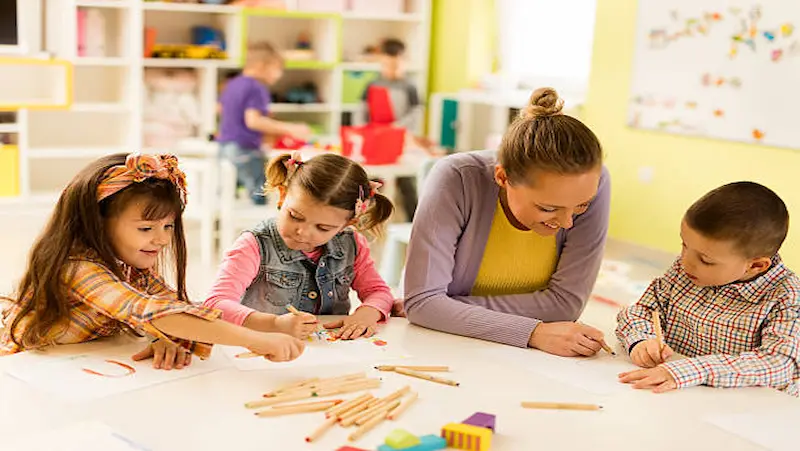
Sharing and Celebrating Creativity
Creating a supportive environment for children’s artistic expressions is essential for nurturing their creativity and boosting their self-esteem. Here are some suggestions to encourage and celebrate their finished coloring creations:
1. Display with Pride: Showcase your child’s artwork by displaying their finished coloring pages in a prominent place at home. Use magnetic clips, frames, or a dedicated bulletin board to create a mini art gallery. This not only validates their efforts but also reinforces their confidence and pride in their artistic abilities.
2. Celebrate Achievements: Celebrate your child’s coloring accomplishments by acknowledging their efforts and praising their creativity. Offer specific compliments on their color choices, attention to detail, or unique interpretations. This positive reinforcement helps build their self-confidence and encourages them to continue exploring their artistic talents.
3. Create a Coloring Journal: Encourage your child to keep a coloring journal or scrapbook to document their coloring journey. They can add their completed coloring pages, write reflections about their favorite colors or designs, and even include personal notes or affirmations. This journal serves as a keepsake of their artistic progress and allows them to reflect on their creative growth over time.
4. Share with Family and Friends: Encourage your child to share their artwork with family and friends. They can gift their colored pages, create homemade cards, or even organize a mini art exhibition at home. Sharing their artwork fosters a sense of pride and connection, while also receiving validation and support from loved ones.
5. Online Sharing: With appropriate parental supervision, consider sharing your child’s artwork online. You can create a private family album or share selected pieces on social media platforms with consent and privacy considerations in mind. Online sharing allows extended family members and friends to appreciate and celebrate your child’s artistic expression.
6. Collaborative Art Projects: Engage in collaborative art projects as a family or with friends. Set aside designated times to color together, exchange ideas, and create joint masterpieces. Collaborative art promotes teamwork, bonding, and the joy of creating together.
By creating a supportive environment for your child’s artistic expression, you help cultivate their self-expression, confidence, and love for art. Celebrating and sharing their artwork not only boosts their self-esteem but also allows them to experience the positive effects of connecting with others through their creative endeavors.
For a burst of creativity, check out these drawing ideas for kids From imaginative creatures to vibrant landscapes

Conclusion
In conclusion, mindfulness coloring provides a wonderful avenue for children to unlock their creativity and cultivate a sense of calmness. By engaging in this mindful activity, children can experience a range of benefits, including relaxation, improved focus, enhanced fine motor skills, self-expression, and emotional regulation.
Selecting appropriate coloring tools, themes, and techniques further enhances the mindfulness aspect of coloring, encouraging children to be present, observant, and engaged in the process. Creating a supportive environment that celebrates their artwork and encourages sharing with family and friends fosters self-confidence and a deeper connection to their artistic expressions.
So, let’s embrace the world of mindfulness coloring and empower our children to find serenity, creativity, and joy through the colorful pages of their imagination.
Also, BrightChamps provides a comprehensive platform for learning about money for kids, offering interactive and engaging resources that teach financial literacy, budgeting, saving, and other essential money management skills.
Frequently Asked Questions
Mindfulness coloring pages are designs specifically created for coloring with a focus on being present and engaged. They promote relaxation, improve focus, and foster self-expression, unlocking creativity and calmness in kids.
Incorporating mindfulness practices into a child’s routine is important as it helps develop self-awareness, emotional regulation, focus, and resilience. It promotes overall well-being and equips them with valuable skills for life.
Coloring pages enhance a child’s creativity and imaginative thinking by providing a visual framework for expression, allowing them to choose colors, explore different combinations, and bring their unique interpretations to life on the page.
Yes, focusing on breath while coloring, using slow and deliberate strokes, and observing colors and textures mindfully are coloring techniques that can promote mindfulness in kids.
Using mindfulness coloring pages can have several benefits for kids’ mental and emotional well-being, including promoting relaxation, reducing stress, enhancing focus, fostering self-expression, and supporting emotional regulation and creativity.
Mindfulness coloring pages can be used as a tool for relaxation and stress reduction in children by providing a calming and focused activity that promotes mindfulness, engages the senses, and encourages a state of relaxation and inner calm.
Yes, there are various types of mindfulness coloring pages available for kids, catering to different interests and age groups. They can range from nature scenes and animals to mandalas and inspirational quotes, providing a diverse selection for children to choose from.
Yes, mindfulness coloring pages can be used as an educational tool. They can teach children about colors, patterns, and shapes while promoting focus, creativity, and emotional well-being through the mindful coloring process.
To effectively incorporate mindfulness coloring pages, set aside dedicated time for coloring, create a calm and comfortable space, encourage mindfulness techniques, provide a variety of coloring pages, and join in the coloring experience together.
While there is limited research specifically on mindfulness coloring pages for kids, studies on mindfulness and art therapy indicate potential benefits for promoting creativity, relaxation, and emotional well-being in children.

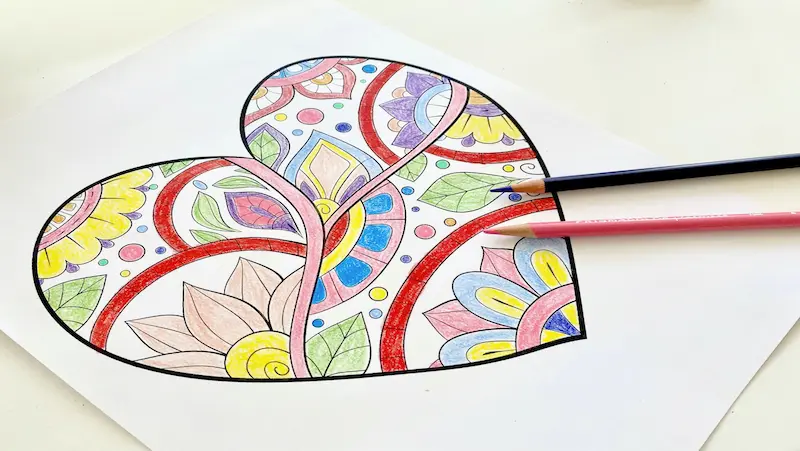
 We are an army of educators and passionate learners from BrightChamps family, committed to providing free learning resources to kids, parents & students.
We are an army of educators and passionate learners from BrightChamps family, committed to providing free learning resources to kids, parents & students.













